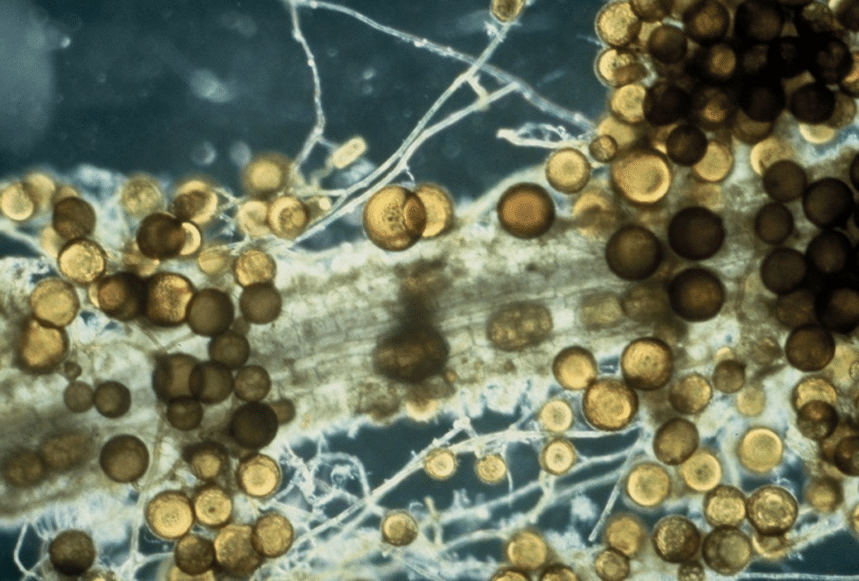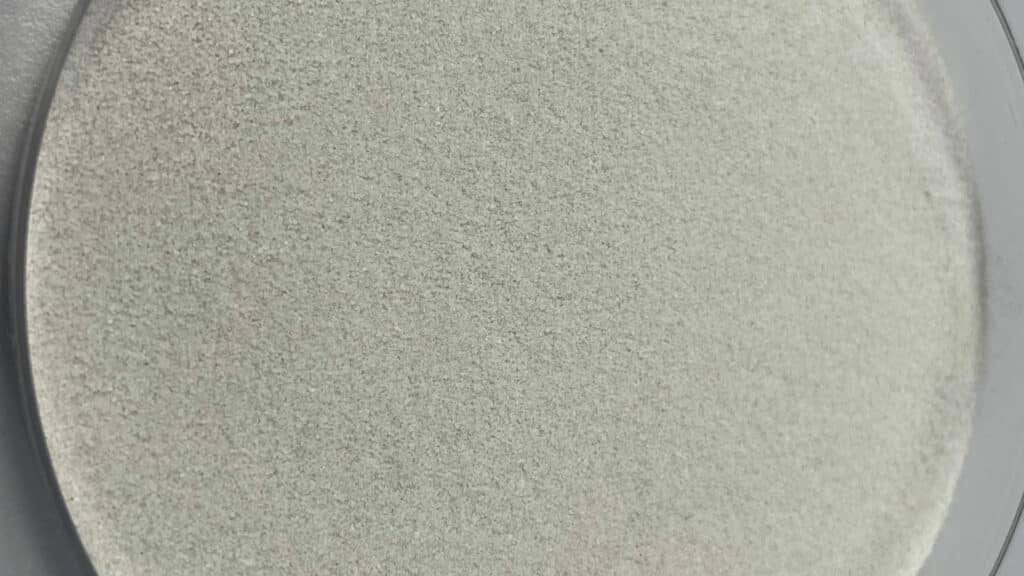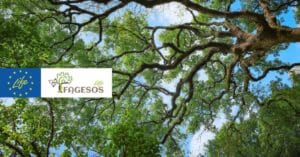The ATENS technology serving farmers. Benefits of BEG72 Mycorrhiza and ATENS Patented Plant Fiber in a water stress context.
The current drought affecting many areas, and overall water resource management, represent one of the most significant present and future challenges for agriculture.
In this scenario, BEG72 Mycorrhiza and ATENS Patented Fiber emerge as highly effective solutions, capable of transforming how plants face water scarcity.
BEG72 Mycorrhiza by ATENS

Mycorrhiza are beneficial fungi that form a symbiosis with plant roots. In drought conditions, ATENS’ BEG72 Mycorrhiza enhances plants’ ability to absorb water and essential nutrients from the soil. This symbiotic association not only increases plant resistance to water stress but also improves water use efficiency.
1. Increased Absorption Surface
The formation of extensive hyphal networks, along with the soil’s improved moisture retention properties, enhances water and nutrient absorption in water-deficient plants. Studies have shown that as the soil dries and water is retained only in smaller pores where fungal hyphae can grow but not roots, the water absorption function of hyphae becomes more crucial for plant survival and development (Allen, 2007).
2. Promotion of Growth and Gas Exchange
As a result of improved plant hydration, water use efficiency and cell turgor increase, leading to the promotion of photosynthetic capacity and plant growth (Andreo-Jimenez et al., 2015). Additionally, it was observed that mycorrhizal symbiosis alters stomatal conductance in host plants more in drought conditions than in well-watered conditions (Augé et al., 2015).

3. Better Osmotic Adjustment
Mycorrhizal plants exhibit improved osmotic adjustment and, consequently, a better water status when subjected to water deficit (Ruiz-Lozano et al., 2012)
4. Induction of the Antioxidant System
Mycorrhizal plants generally show reduced production of Reactive Oxygen Species (ROS) under drought conditions, which, in turn, stabilizes proteins and enzymes, reducing damage to lipids.
5. Alteration of Hormonal Profile
Increased levels of ABA, the ‘abiotic stress hormone,’ reported in some studies, would promote drought tolerance while maintaining the establishment and functioning of the symbiosis (López-Raez, 2016).”
ATENS’ PATENTED PLANT FIBER

Another key element that enhances tolerance to water scarcity is ATENS’ Patented Plant Fiber (WO2018134465A1), a highly viscous soluble fiber with a high water retention capacity.
This technology, present in many of our formulations, increases the soil’s water retention capacity, allowing the plant to have more water available. With the same water input, the plant can develop more biomass, helping alleviate drought symptoms by maintaining water content in the leaves.
Discover the best option for every need
In ATENS’ catalog, various formulations based on BEG72 Mycorrhiza can be found, designed for different application methods and crops. Contact us, and we will guide you to find the best solution for your needs.”






